There’s nothing quite like leaving the hustle and bustle of the world behind and heading into the wilderness.
Whether you’re planning on spending your trip in the same camping spot, or your goal is to hike the length of the Appalachian Trail, the world’s wilds and woods tend to welcome us home whenever we visit. Those same welcoming woods can also be dangerous for those ill-prepared, and an injury in the wilds can be deadly if you’re not ready to deal with it.
Ideally, you want to prevent injuries while you’re exploring the wilderness, but if that isn’t possible, you’ll need to know how to treat them as well. How can you prevent and deal with injuries while you’re in the woods? This article will give you some helpful advice.
Common Injuries in the Wilderness
Before we start talking about prevention and treatment, you need to understand the most common injuries you might experience while you’re exploring the woods. There will almost always be outliers — things that don’t appear on this list — but these are the most common problems you might encounter during your next trip.
Blisters
Even those experienced with the outdoors can end up with uncomfortable blisters on their feet after a long day on the trail. These might not seem dangerous to the average observer, but if left untreated, blisters can be painful and even develop into nasty infections.
Dehydration
If you don’t get enough water on the trail, you risk developing dehydration. The signs are easy to overlook, especially if you’re not hiking in a warm environment. What starts as uncomfortably dry lips can quickly turn into a brain fog and heat-related injuries. If you’re alone and don’t have someone looking out for you, dehydration can become dangerous very quickly.
Ankle and Knee Injuries
The human body can be incredibly resilient, but it doesn’t take much to injure our joints — especially those in the knees and ankles. You might be able to wrap up and walk on a sprained ankle, but you might also find yourself stranded and unable to get home if the injury is severe enough. We’ll talk more about treating and preventing these issues later.
Burns
No matter how careful you are, if you have a campfire or camp stove set up to cook your food or provide warmth, there is always a risk of burns. Depending on the severity, burns may even require a trip to the hospital. These injuries are something every explorer and woodland wanderer needs to be aware of.
Cuts
Small and large cuts are common when you’re traipsing through the wilderness. In most cases, it’s not the cut itself that creates the greatest threat. It’s the possibility of infection that can put you in danger.
Animal Attacks
While animal attacks aren’t as common as many of the other injuries on this list, you’re in their territory when you’re in the woods. Ending up on the wrong side of a predator or large herbivore can be devastating or even fatal.
With these common injuries in mind, what can you do to prevent them, and if they do occur, what do you need to know to treat them? Luckily, the answers are relatively straightforward.
An Ounce of Prevention
Ideally, the best way to stay safe in the wilderness is to prevent these injuries from occurring in the first place. Let’s look at the injuries we mentioned above and explore how you might prevent them.
Preventing Blisters
Blisters happen when thick skin on areas like your hands or feet gets rubbed repeatedly. This repetitive motion makes the thick top layer separate from the softer skin beneath. This space gets filled with fluid and can eventually pop. Blisters are uncomfortable, but they’re not generally dangerous unless they get infected.
The best way to prevent blisters is to ensure your hiking boots or shoes fit correctly and aren’t sliding around when you’re moving. Wearing a hiking sock underneath your regular sock can also help prevent blisters from forming even if your shoes don’t fit perfectly. If blisters are a problem, consider heading to a sporting goods store to get professionally fitted for a pair of hiking boots that will protect your feet.
Preventing Dehydration
Preventing dehydration is fairly straightforward, but there are some variables you need to consider. It’s not as easy as drinking when you’re thirsty. If you wait until you feel that thirst trigger, you’re already starting to dehydrate if you’re engaging in moderate or strenuous activity.
In general, experts agree we should be drinking at least 2 liters a day while hiking or backpacking. That number goes up if you’re in a warm area or you’re exerting yourself. Be aware of the symptoms of dehydration and monitor yourself for them.
Preventing Ankle and Knee Injuries
Tripping over a log, falling in a hole, or sliding down a mountainside all have one thing in common — you’ll likely injure your ankles or knees. These joints consist of all sorts of bones, muscles, tendons, and ligaments, and each can represent a potential failure point if you’re not aware of the risks.
Make sure you’re exercising your legs, specifically your knees and ankles. Exercises that increase muscle strength also improve ankle and knee stability, reducing your risk of injury while exerting yourself. Getting fitted for hiking boots can also protect your ankles, allowing you to prevent injuries while exploring the wilderness. Make sure you can see where you’re going, too. Bring along a high-power tactical flashlight to make sure your path is well-lit, especially if it gets dark before you could reach your destination.
Preventing Burns
It feels like something is missing if you set up camp without a campfire. Plus, no one wants to eat cold canned food after a long day on the hike. Still, you need to be careful when setting up your fire or cooking station to ensure you don’t end up burning yourself in the process.
If you’re building a fire, choose your location carefully and make sure there aren’t any low-hanging tree limbs or debris that could catch and allow your fire to spread. Be careful when you’re putting food on or taking it off the fire, and make sure you bank it at night. This means burying the coals so you can stoke it in the morning without having to rebuild it entirely.
Banking your fire means it’s safe to go to sleep because as long as you clear the area around your fire pit, there’s no chance for the flames to spread.
Preventing Cuts
Cuts and scratches might not seem dangerous when you get them, especially if they’re small or shallow. When you’re exploring the wilderness, the cuts aren’t the danger — it’s the potential infection that might sideline you or even send you to the hospital.
Preventing cuts can be as simple as wearing proper clothing, avoiding unbroken trails or underbrush, and being careful with your footing to prevent falls. When you’re using a hunting knife, be sure to cut away from yourself. Also, keep your blade sharp. You’re more likely to cut yourself with a dull knife than you are with a sharp one, simply because it requires more effort to complete the same task. You’re more likely to lose control of the knife, resulting in injury.
Preventing Animal Attacks
You’re more likely to die in a car accident than you are to be attacked by an animal, but you should still take steps to prevent these attacks to keep yourself safe and uninjured in the woods.
Choose your campsites wisely. Avoid game trails and watering holes with many prints, indicating a lot of animal traffic. Any food you bring with you should be strung up in a tree. Place it away from your campsite to keep it from bears and other large animals that might come sniffing around. Be mindful of your surroundings and the animals you might encounter on your trip, and do your best to stay out of their way.
Treating Injuries in the Wild
Now that we’ve covered prevention, it’s time to move on to treatment. Treating injuries in the wild isn’t an ideal scenario, but if you are hours or days from civilization, you don’t have much of a choice. How can you treat common injuries in the wild? These tips will show you how.
Treating Blisters
Blisters can be large and uncomfortable, but the last thing you want is for them to pop while you’re walking. Instead, the best way to treat them is to get ahead of the damage. Cover hotspots that might turn into blisters with bandages or moleskin. If you do develop a large fluid-filled blister, carefully drain it with a sterilized needle before covering it. If it pops while you’re hiking, take a break and treat it like any other wound.
Treating Dehydration
Minor dehydration is easy to treat. You simply need to drink more water. If you’ve moved past that into more severe dehydration symptoms, you need to stop, find a shady spot, drink water, and assess. If you can improve your situation by rehydrating, then take a break before you continue to drink more water and rest. If you can’t, or you’ve already started showing signs of heat-related illnesses, you may need to call for rescue.
Treating Ankle and Knee Injuries
How you treat ankle and knee injuries will depend on their severity. Don’t try to diagnose the injury itself — leave that for medical professionals when you make it back to civilization. Instead, put your injury in one of two categories — either the wounded limb is usable or unusable. Usable means that, when wrapped, you can still put weight on the limb and walk, even gingerly. Unusable means there is a severe injury, or you can’t bear weight on the limb.
For usable injuries, use the RICE method — Rest, Ice, Compression, and Elevation. Take a break, wrap the limb, elevate it above your heart, and treat any swelling with ice. For severe injuries, send someone for help or call for rescue.
Treating Burns
Burns can be tricky to treat in the wild, and again, how you treat them will depend largely on their severity. Minor burns might take nothing more than running the affected area under cool water to soothe the discomfort, while major ones can require surgery and skin grafts in a hospital.
Generally, you’ll want to clean the burn with cool water, apply antibiotic ointment or burn gel and cover it with a sterile bandage. For small burns, you probably won’t need to cancel your trip, but for larger or severe ones, seek medical attention.
Treating Cuts
How you treat cuts depends on their size and depth. A small and shallow scrape won’t need the same sort of treatment as a large gash that’s spurting arterial blood. If you end up with a cut or scrape, stop and assess the damage. Large cuts will need more immediate treatment, while smaller ones might be able to wait until you take your next break.
Either way, you want to ensure you’re cleaning the wounds thoroughly and covering them with antibiotic ointment and bandages. Keep an eye out for signs of infection. If the wound gets extremely red and painful and begins to ooze, or you begin to run a fever, seek medical attention.
Treating Animal Attacks
Finally, we have animal attacks. Treating animal attacks almost always involves a trip to the hospital, especially if you find yourself running afoul of a predator that uses its teeth and claws to inflict harm. Large herbivores are also dangerous because of their sheer size, and some, like moose and bison, can easily hurt or even kill you if you get too close.
Assess the damage and call for rescue. Even minor wounds need to be reported. With predator attacks, you’ll also likely need a course of rabies shots to be on the safe side.
Stay Safe on Your Next Trip to the Woods
Whether you’re hiking across the states or just heading out for a camping trip, stay safe when you enter the woods. Understanding basic emergency first aid can save you a lot of trouble in the long run, and it might even save your life.


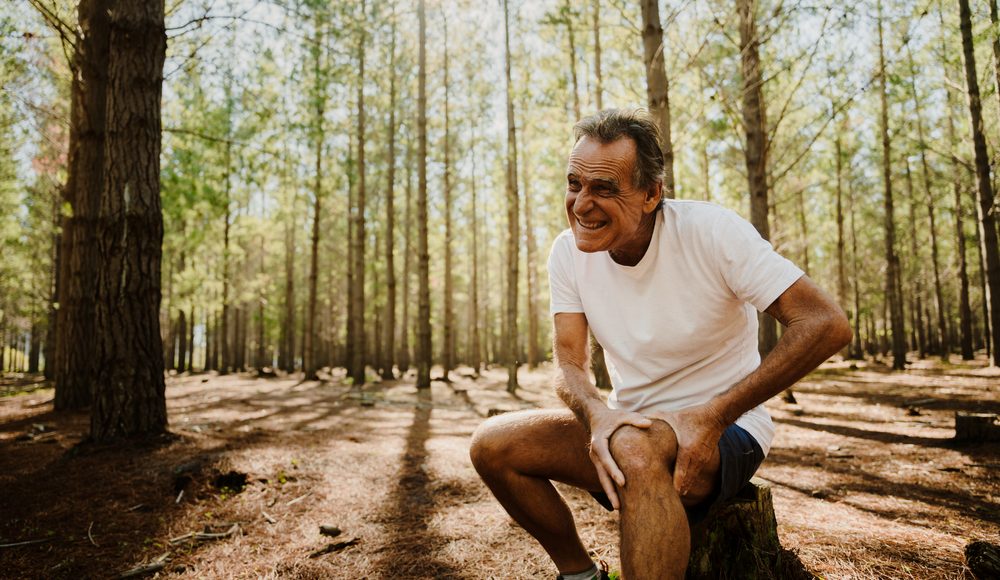

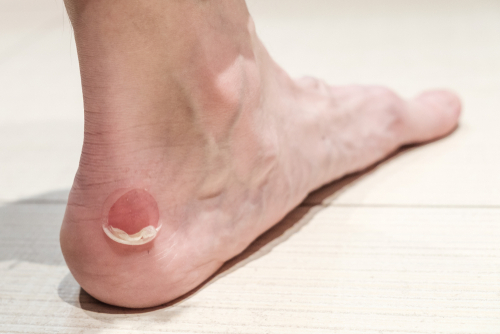
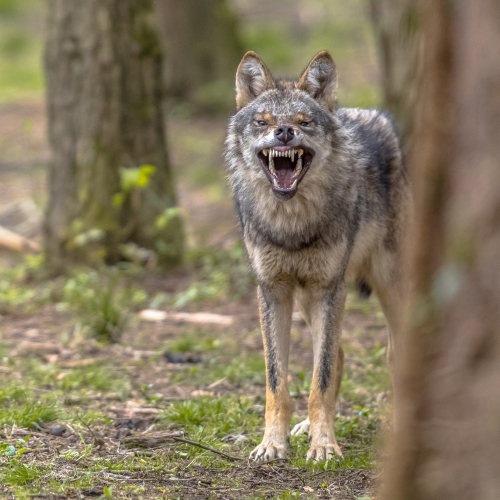
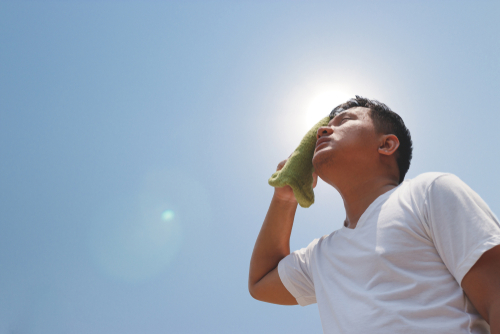
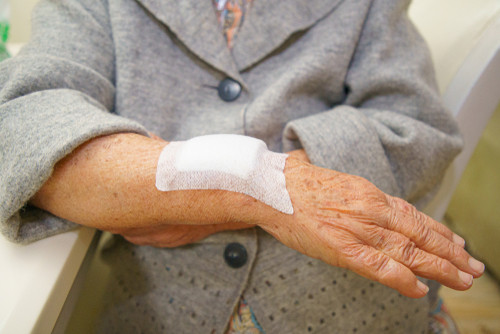
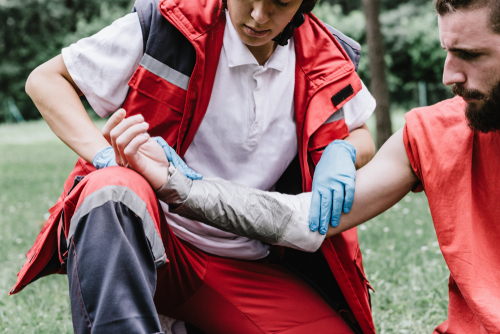

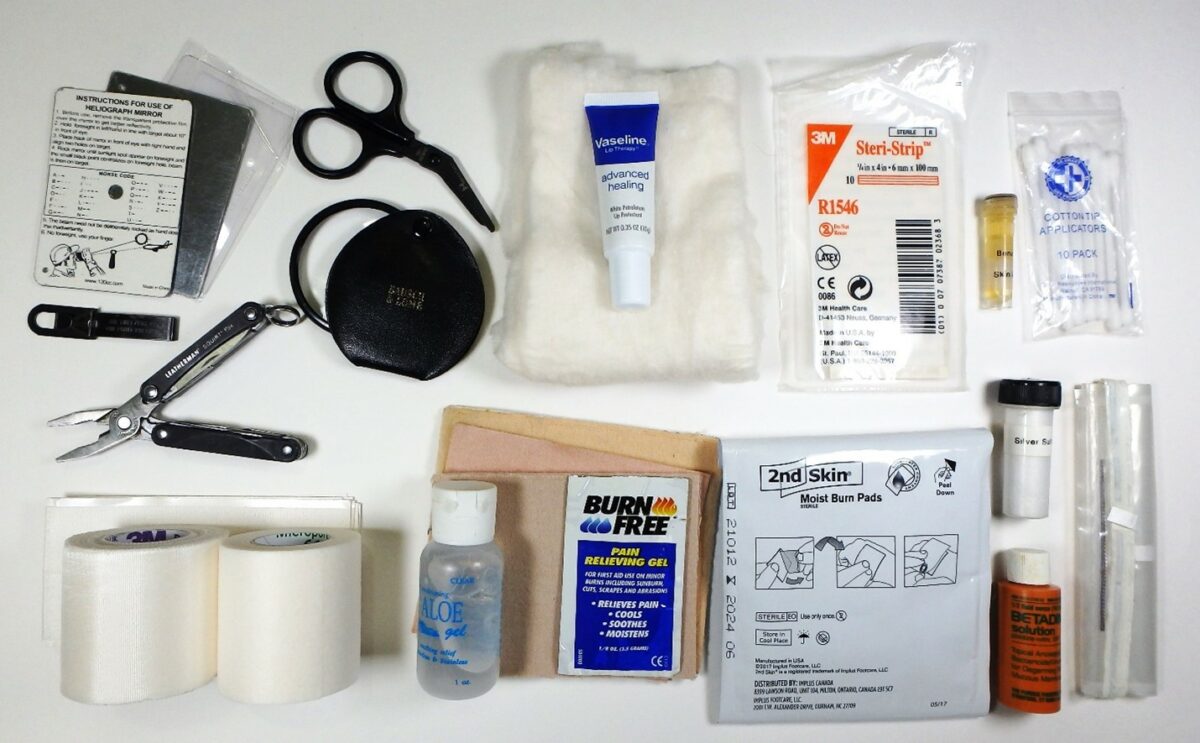
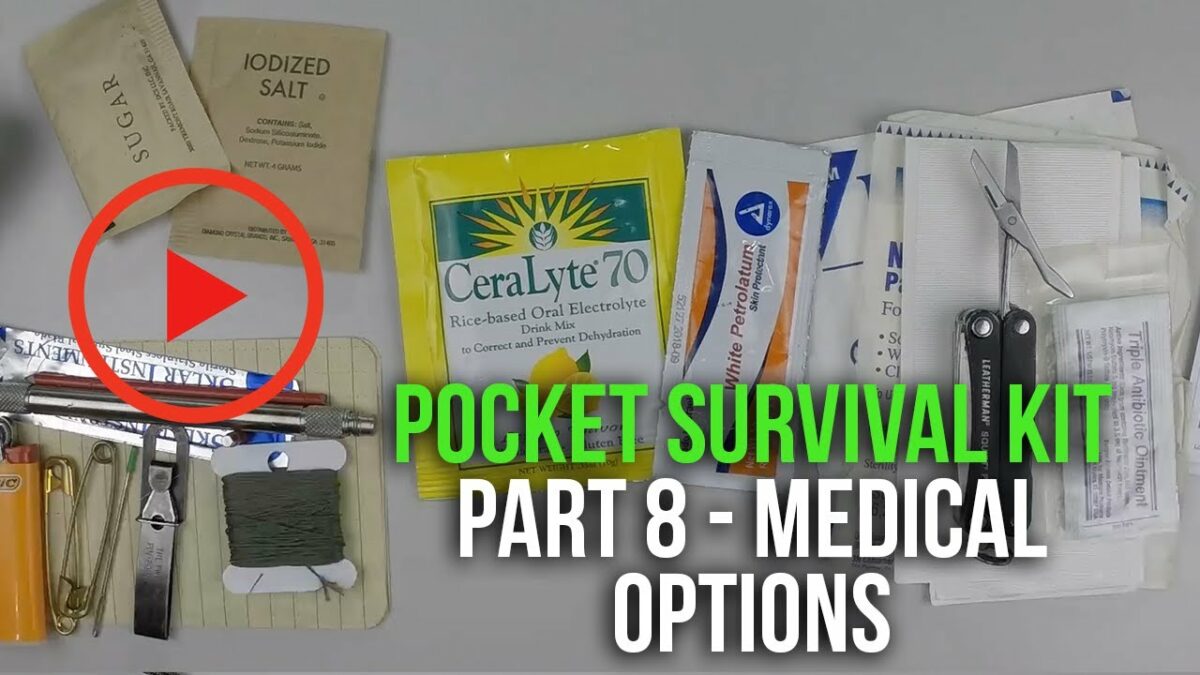
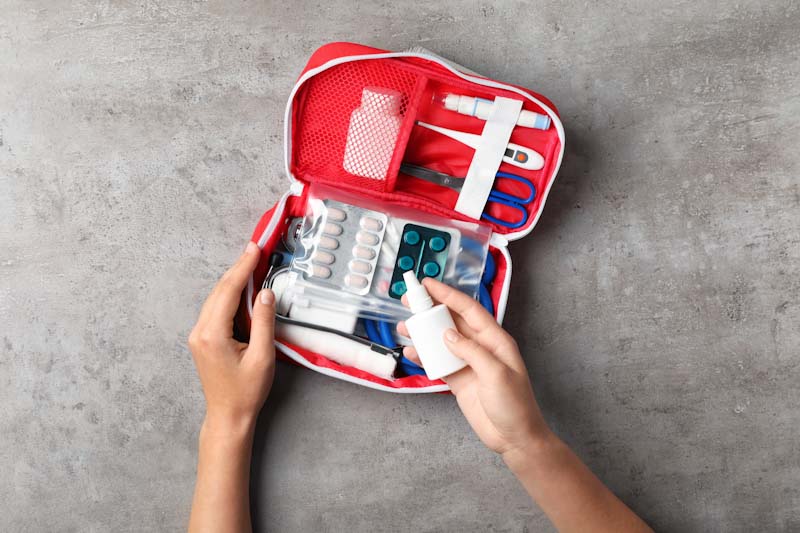


radarphos | March 17, 2021
|
When living in the high plains of Colorado and walking through the tall Plains grasses exploring, locals told me to wear two pairs of jeans, one normal fitting and the other very baggy. The baggy pair was designed to catch the two fangs of a hidden rattlesnake that strike outward but then pull towards the ground as the snake injects its poison. Wearing specially made snake pants (chaps) over jeans that cover only legs and thighs, then strap to the belt will prevent successful snake and thorny shrub attacks (even stopping poison ivy/oak) from absorbing into your jeans. But these increase leg heat and sweating and will require drinking more water; and they are noisy when walking that may alert animals of your presence.
In the military many soldiers wore women’s nylon “short” stockings under their socks to avoid feet blistering during long boot marches. I did, and did it again when “pounding concrete” (walking, turning, twisting my feet) 8-10 hours daily in boots. Before doing that I wore tennis shoes, then boots, but Soon enough my feet’s “wear spots” developed callouses and painful corns. Nylon material slips against most other materials, so they help the feet avoid abrasion that causes blistering, callouses, and corns. Everybody has a different “walking gait”. Nylons can stretch to fit anyone’s foot; and if you have one leg shorter than the other, such as if you were a club-foot baby, or if your legs are a bit bowed with one foot tending to be pointed more outward than the other foot, you will benefit from wearing nylon short-stockings under your socks. Plus in cold weather they add a base-layer of warmth to your feet without clinging to foot-sweat that can chill feet.
In my state people who canoe often plan 3-5 day water trips. They will have someone drive them to the start place, then they will canoe to their final destination. Many will pre-position cached supplies at selected camping areas (usually not far from bridge-roads that cross their waterway). I mention this as a “good idea” for long-distance hikers-explorers. This is done as a strategy or precaution that permits canoeing with a lighter load, knowing that re-supply is further downstream. It is a good planning idea, since storms come along and all sorts of issues and hazards can arise that delay one’s progress as a person is also consuming their resources supply. The original pioneers planned trips also. Many original pioneer taverns with sleeping rooms for travelers (and later towns) were positioned on waterways; and tended to be about 20 miles apart (a day trip by horseback). One could plan hiking/biking trips adjacent to waterways; and/or pre-position supplies about a day walk away.